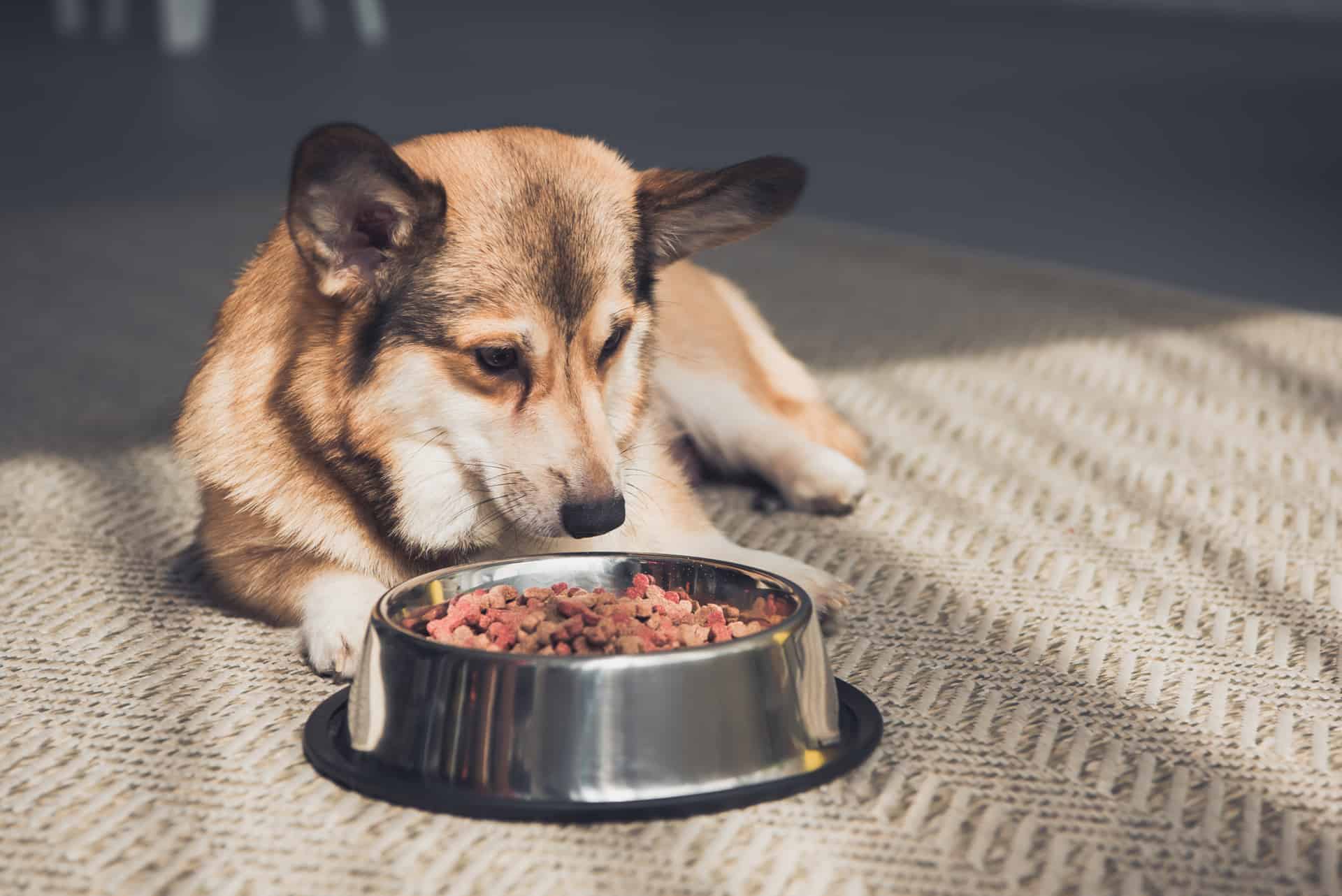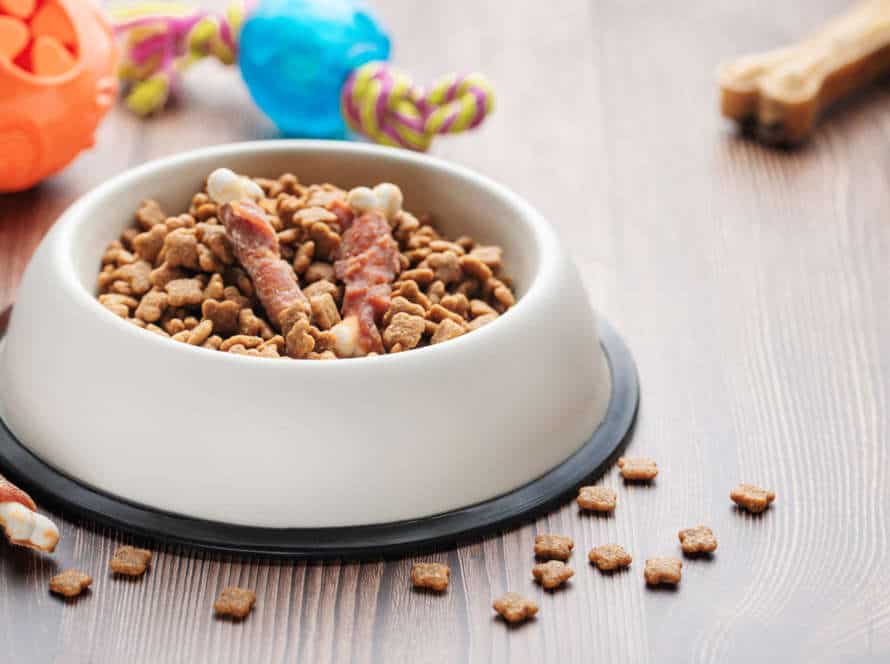How to Choose the Best Dog Food for Your Dog’s Needs
Choosing the ideal dog food for your furry friend can be tricky. But, there are numerous things that can help you select the correct one.
Firstly, work out your pup’s nutritional needs based on age, breed, weight, and activity. Puppies require higher fat and protein, while senior dogs need fewer calories.
Read the food’s ingredients list and make sure it contains quality protein sources like beef, fish, or chicken, whole grains, and essential minerals and vitamins for optimal health.
Avoid dog food with fillers or artificial preservatives that are bad for your pup’s health.
Lastly, ask your vet for advice on the best dog food brand that suits your pup’s breed and health.
By considering these factors, you can pick dog food that meets your pup’s requirements and supports their overall well-being.
Understanding Your Dog’s Nutritional Needs
Feeding your pup correctly is vital for their wellbeing, joy and life-span. It’s essential to comprehend your dog’s dietary necessities and how to pick the ideal food for them. Discovering the various nutrition essentials and how to pick the best food for your dog can assist you with settling on the best food choice for them.
Determine your dog’s life stage
It’s key to know your dog’s life stage when selecting food. Here are four stages and their needs:
- Puppy: Need more cals, protein and fat for growth and strong bones/muscles/organs. Look for “puppy” or “growth” labelled food.
- Adult: Balanced diet with fewer cals, adjusted protein/fat levels. “Adult” or “maintenance” labelled food.
- Senior: Lower energy levels, need fewer cals, lower protein and higher fiber. “Senior” or “mature” labelled food.
- All Life Stages: Balanced nutrition for all stages. Meet requirements for puppies/adults/seniors. But watch fat/protein levels vs. individual needs.
Determine your dog’s breed or size
Knowing your pup’s breed or size is key for understanding their food needs. Bigger dogs have different requirements than small dogs. Plus, certain breeds may be more prone to health issues. Here are some tips to help you figure out your dog’s breed or size:
- Check your pup’s documents, like adoption papers or breeder info. It often includes breed or size.
- Schedule a DNA test. It will give insight into breed and risks.
- Ask your vet. They can look at physical traits and give guidance on food needs based on breed or size.
Determine your dog’s activity level
Finding out your pup’s activity level is essential when picking the right dog food. It should meet their dietary needs and support their health and contentment.
Here’s how to do so:
- Take a look at your doggo’s everyday exercise like walks, playtime, and training.
- Remember their age, breed, and size, since these things can affect their energy and nutrition demands.
- Check their behavior, including their energy levels, hunger, and body condition. This helps you figure out how many calories they need daily.
After deciding your pup’s activity level, pick a food that matches their nutritional necessities. This includes protein amounts, fat content, carbohydrate sources, etc. Doing this can keep your fur baby healthy, lively, and content.
Reading and Deciphering Dog Food Labels
Picking the correct food for your pup is no joke. To make an informed decision, read and comprehend dog food labels.
Every dog food label contains three parts:
- The product name
- The guaranteed analysis
- The ingredients list
These three sections need to be examined in more detail.
Understanding ingredients list
It’s key to comprehend the ingredients list when you look at dog food labels to get the top food for your pup’s nutritional needs. Here is what you need to know:
- The first few items are the most prominent, as ingredients are listed in descending order by weight.
- Look for named proteins (like chicken, beef, or fish) as the first ingredients.
- Avoid generic meat by-products or meat meal, as these can be low-quality or unhealthy.
- Check for fillers like grains or corn, which can cause stomach trouble or hair and skin issues for some dogs.
- See if vitamins and minerals are included, especially if your dog has certain health conditions that require them.
Keep in mind that each pooch is distinct, so it’s good to chat with your vet about the best food for your pup’s specific dietary needs.
Understanding guaranteed analysis
Guaranteed analysis is a must-have for dog food labels. It’s essential for pet owners to understand it when picking the most suitable dog food for their pup.
Crude protein and fat are the minimum percentages stated in the analysis. Crude fiber and moisture are the maximum percentages. Vitamins and minerals may also be included.
“Crude” refers to the testing method to measure nutrients, not their quality.
To select the best dog food for your canine, think about their age, breed, activity level and health status. Ask your vet for advice too.
Understanding feeding instructions
Unravelling dog food labels is a must when picking the best food for your pup. Knowing and understanding the feeding instructions is key. Here’s what to do:
- Look for the feeding guide. It will show amounts that depend on your dog’s weight and age.
- Check the ingredients for animal protein and no bad additives.
- See if it’s formulated for your dog’s needs, like weight, breed, or age.
- Look at the calories and adjust the amount based on your dog’s activity level.
Pro Tip: Ask your vet or a canine nutritionist for the best diet for your pup.
Types of Dog Food and their Pros and Cons
Dog food comes in many types. These are dry, wet, raw, and homemade. It’s key to know the pros and cons of each before deciding on the best food for your furry friend. Let’s take a look!
- Dry food is great for teeth, but may lack in nutrition.
- Wet food contains more nutrition, but can be messier.
- Raw dog food is natural, but needs careful preparation.
- Homemade food is healthy, yet time-consuming.
Dry Dog Food
Dry dog food is popular and easy to store. Here are types and their pros/cons to help you choose best for your pup:
- Kibble: Most common form. Convenient and affordable. Long shelf life, easy to serve and good dental health. But, not all kibble is high-quality and won’t meet all dogs’ needs.
- Freeze-dried: Made by removing moisture from fresh/raw ingredients. Nutrient-dense and extended shelf life. But, more expensive and may not suit all dogs.
- Dehydrated: Heated ingredients are dried. Shelf-stable and can be served moistened/dry. But, not suitable for dogs with dental issues as it needs soaking in water before feeding.
- Homemade: Allows owners to customize meals. Helpful for dogs with health issues/allergies. But, time-consuming and challenging to balance all the necessary nutrients.
The best way to choose is to consult your vet. They will help identify right ingredients and select food based on nutritional requirements and health conditions.
Pros and Cons of Dry Dog Food
Dry dog food is a popular option. But, it has pros & cons.
Pros:
- Convenient – easy to store, serve & transport.
- Cost-effective – less expensive than other types.
- Dental health – crunchy texture reduces plaque & tartar buildup.
Cons:
- Low moisture – can lead to dehydration.
- Quality – some types contain low-quality ingredients or fillers.
- Digestive issues – trouble digesting dry food, leading to issues like bloating, gas & constipation.
Choose the best food for your dog’s age, activity level & health. Get vet recommendations for specific needs.
Wet Dog Food
Wet dog food is a popular choice for pet owners. It has high moisture and is tasty, but it also has pros and cons.
Pros:
- Hydrates dogs with its high moisture content.
- Easy to digest, great for dogs with digestion problems.
- Picky eaters love it.
Cons:
- More expensive than dry dog food.
- Shorter shelf life compared to dry dog food.
- May not provide enough dental benefits.
When picking the best food, consider age, breed, activity level, and health issues. Ask your vet if you’re unsure.
Pros and Cons of Wet Dog Food
Wet dog food has both pros and cons when it comes to feeding your pup. Knowing these is vital to pick the best food for your pet.
Pros:
- Taste & texture – Wet food usually contains more meat protein. This makes it more yummy for picky eaters.
- Hydration – It’s high in moisture content, great for dogs who don’t drink enough water.
- Digestibility – Easier to digest, great for dogs with tummy troubles.
Cons:
- Cost – Higher quality ingredients make it more expensive than dry food.
- Short Shelf Life – Once opened, it doesn’t last as long as dry food.
- Dental Health – Wet food can stick to teeth and cause plaque buildup.
Weigh the pros and cons, then talk to your vet to decide if wet food is the best fit for your pup.
Semi-Moist Dog Food
Semi-moist dog food is a type of pet food, sealed in bags or pouches. It has a chewier texture than dry kibble and wet canned food.
Pros: Dogs like it for its softness and taste. It doesn’t need refrigeration and won’t make a mess. It also has a longer shelf life.
Cons: High sugar and salt content can lead to obesity, dental issues, and other health risks. It’s pricier than dry kibble and has fewer benefits than wet canned food. Some semi-moist foods contain artificial colors, flavors, and preservatives that may trigger allergies or digestion problems.
When selecting the best food, consider factors like age, breed, activity level, and health condition. Talk to your vet to find out nutritional needs. Pro-tip: Use semi-moist food as a treat or occasional meal supplement, not a staple diet.
Pros and Cons of Semi-Moist Dog Food
Semi-moist dog food has its advantages and disadvantages.
Pros: It’s easy to store and comes in resealable packaging; plus, it’s soft and chewy, making it easier to digest and more attractive to fussy eaters.
Cons: It has high sugar and artificial preservatives, possibly leading to weight gain and other health problems. Also, it’s often more costly than other types of dog food.
So, when selecting the best type of food for your canine, weigh the pros and cons, and ask your vet for advice.
Homemade Dog Food
Choosing the right dog food is key. Let’s look at the pros and cons of different types.
- Dry food: It’s affordable, easy to store and long-lasting. But it may have fillers and artificial preservatives, which can be harmful.
- Wet food: Tasty, hydrating and digestible. Great for picky eaters or those with dental issues. But, it’s pricey and spoils quickly.
- Raw food: Includes uncooked meats, fruits and veg. Gives natural nutrients and can improve coat and digestion. But, it can be dangerous and may not give all the essential nutrients.
- Homemade food: You have control over ingredients and portion sizes. But it’s time-consuming and costly.
Age, size and health needs are important factors. And, always consult your vet before changing the diet.
Pro tip: Read and understand the ingredients label before buying any commercial dog food.
Pros and Cons of Homemade Dog Food
Homemade grub for doggos has gained traction lately. Some owners now prep their pup’s meals. Though there are merits, think of the cons.
Pros:
- Control of ingredients. When you make it yourself, you decide what goes in. Especially helpful if Fido has allergies or special needs.
- Fresh and unprocessed. Homemade grub is usually made from fresh stuff. This can be better than many store-bought options.
- Customizable. You can craft the food to fit your pooch’s needs, likes, activity level and age.
Cons:
- Time consuming. Selecting, cooking, and storing requires effort.
- Risk of deficiencies. Preparing balanced food demands knowledge of your dog’s needs.
- Costly. Homemade food may cost more than many commercial brands, especially if you use top-notch ingredients.
Pro tip: Contact your vet before switching. Ask for advice on how to make sure the food is balanced.
Choosing the Best Dog Food Based on Your Dog’s Needs
Finding the optimum food for your pup can be difficult. It is essential to take into account your pup’s age, breed, size and health when picking the best food. You must make sure the diet you pick offers your pup all the vital nutrients they require to stay healthy. Let’s look at what you need to consider when selecting the top food for your pup.
Identifying potential allergens and intolerances
Identifying potential allergens and intolerances in your pup is essential for finding the best food for them. Here are some signs to watch for:
- Allergies: Itching, hives, swelling of face/ears/lips/eyelids, diarrhea/vomiting, frequent ear infections, scooting/rubbing, skin infections/hot spots.
- Intolerances: Vomiting, diarrhea, excessive gas, weight loss, poor coat condition, increased bowel sounds.
To determine which foods are causing symptoms, start by removing common allergens like chicken, beef, dairy, wheat and soy from your dog’s diet. Once you’ve identified the problem food/ingredient, look for dog food brands that don’t have it. Also, talk to your vet to find the best suitable diet for your pup’s needs.
Pro Tip: Always read the ingredient label before buying dog food to make sure it doesn’t have any allergens or intolerances.
Considering your dog’s overall health and medical history
Choosing the perfect grub for your pooch is a must for their health and nutrition. Here are some tips to consider when buying dog food:
- Age & Activity Level: Get food that matches your pup’s age and activity level. Puppies need more protein and fat than adults, while seniors need low-calorie and high-fiber diets.
- Food Allergies/Sensitivities: If your doggo has allergies or sensitivities, choose food formulated without specific ingredients.
- Health Issues: Consult your vet first when your pup has certain health issues, such as diabetes or kidney disease.
- Quality of Ingredients: Buy food with whole meats and veggies, and skip items with fillers and artificial preservatives.
- Pro Tip: Read labels and understand what is going into your pup’s food. Ask your vet if you’re not sure which type of food is best.
Determining your budget for dog food
To choose the best dog food, you must work out a budget. Important things to think about are the ingredients and any dietary needs your pup may have. Here are some tips:
- Work out how much you can spend each month.
- Check the quality of ingredients – better quality usually means a higher price.
- Keep in mind any dietary requirements your dog has.
- It’s not just about cost – a good diet can save you money in the long run by helping to avoid health problems.
Pro Tip: Look for brands that offer loyalty, discount and coupon programs to save money without compromising on quality.
Conclusion
To choose the best dog food, understand your pup’s nutrition needs. Read product labels and pick a reputable brand with good ingredients. Consider age, breed, size, and health. Look for named meat sources, whole grains, and fruits and veggies. Pick a brand with a good track record. You can check reviews online or ask your vet for help.
Pro Tip: Transition your pup to new food gradually. Mix old and new food, increasing over 7-10 days. Avoid digestive upset!
Frequently Asked Questions
1. How do I know which dog food is suitable for my dog?
You need to consider your dog’s age, breed, size, weight, and any health concerns before selecting a dog food. Consult with your veterinarian for personalized recommendations.
2. What are the main ingredients to look for in dog food?
Dog food should contain high-quality protein from sources like meat, fish, or poultry, as well as carbohydrates, fiber, and healthy fats. Look for whole ingredients, avoiding fillers, artificial preservatives, and additives.
3. Should I choose dry or wet dog food?
It depends on your dog’s needs and preferences. Dry food is convenient, but wet food contains more moisture, which can be beneficial for dogs with certain health issues. You can also mix dry and wet food for a balanced diet.
4. Can I make my own dog food at home?
While it is possible to make homemade dog food, it can be challenging to ensure a balanced diet with all essential nutrients. Consult with a veterinary nutritionist before making any changes to your dog’s diet.
5. How much food should I feed my dog?
The amount of food your dog needs depends on factors like age, weight, and activity level. Follow the feeding guidelines on the dog food packaging, but adjust as necessary based on your dog’s individual needs and response.
6. Should I switch my dog’s food gradually or all at once?
It’s best to switch your dog’s food gradually to avoid digestive upset. Gradually introduce the new food alongside the current food, increasing the proportion of the new food slowly over 1-2 weeks until you have completely switched over.







